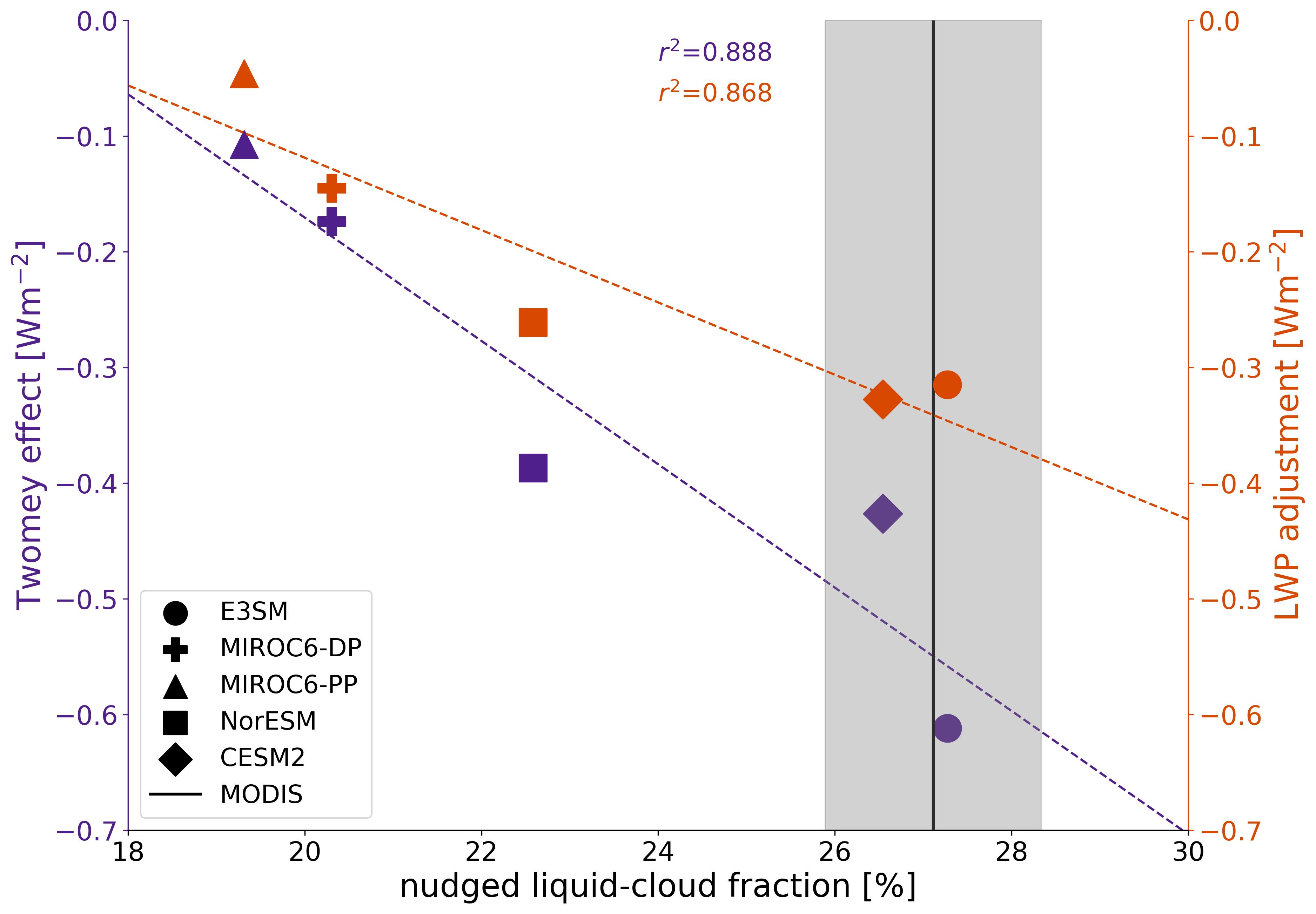New method for diagnosing ERFACI in global climate models

The effective radiative forcing from aerosol-cloud interactions (ERFACI) remains one of the biggest uncertainties in our understanding of the climate system. Recently, Wall et al (2023) developed a new technique to diagnose ERFACI from liquid-topped clouds using MODIS liquid-water path (LWP) x cloud droplet effective radius (reff) joint histograms, in an approach adapted from Zelinka et al. (2013). We extend this work by diagnosing ERFACI in 5 CMIP6 models, yielding new estimates for the Twomey Effect, LWP adjustment, and cloud fraction (CF) adjustment. Despite significant variability in each of the three components across the ensemble, we find that the magnitude of the global-mean Twomey effect and LWP adjustment are strongly controlled by the model mean-state liquid cloud fraction. Our finding hints at a potential emergent constraint on 2 components of ERFaci, which we hope to explore in a larger ensemble. Models with too few liquid clouds in their base state may be underestimating the strength of the Twomey effect and LWP adjustment.
Decomposing Cloud Radiative Feedbacks by Cloud-Top Phase
Changes in cloud scattering properties and emissivity that arise from warming cause substantial radiative feedbacks, and the relative importance of the underlying mechanisms is poorly understood. One leading hypothesis is that ice-to-liquid conversions cause clouds to optically thicken, producing a major negative feedback. By developing a method to decompose cloud radiative feedbacks by cloud-top phase, we find that the global mean of the net cloud scattering and emissivity feedback from cloud-phase conversions ranges from −0.17 to −0.01 W m−2 K−1, while the overall net cloud feedback ranges from 0.02 to 0.91 W m−2 K−1. The multi-model mean of the cloud scattering and emissivity feedback from cloud-phase conversions is approximately 19% of the magnitude of the multi-model mean of the overall cloud feedback (−0.10 W m−2 K−1 vs. 0.52 W m−2 K−1). These results indicate that cloud-phase conversions cause a robust negative feedback by changing cloud scattering and emissivity, but this mechanism makes a modest contribution to the overall cloud feedback at the global scale.
High Cloud Response to Aerosols in a PPE
Aerosol effects on ice clouds have been severely understudied compared to aerosol-liquid-cloud interactions. The MODIS cloud radiative kernel method enables us to partition the total SW ERFaci into components from liquid- and ice-clouds. We have generated a perturbed parameter ensemble (PPE) using CAM6, modelled after Eidhammer et al. (2024). A list of the targeted parameters and their ranges can be found here.